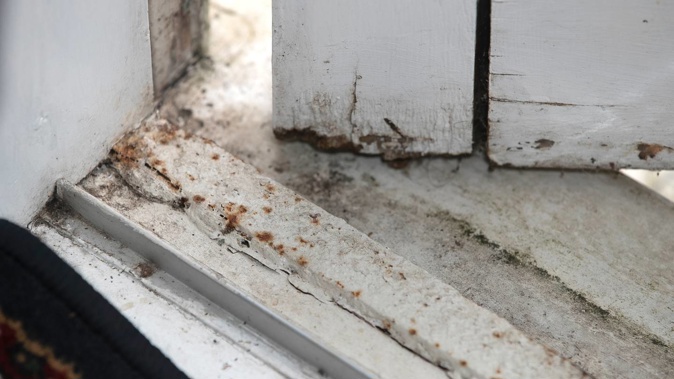
Students are more than twice as likely to live in cold, damp and mouldy homes than the general population.
New research from University of Otago, Wellington found almost half (49 per cent) of the 522 students who were surveyed said their homes were sometimes or always damp – a stark difference from the 22 per cent of the general population who agreed with the same statement.
Two-thirds of students reported they could see their breath inside their homes and four out of five said they shivered in their homes.
Renters United spokesperson Ashok Jacob says the research is incredibly concerning – but he's not surprised.
"New Zealand has a serious problem with damp and unhealthy homes and it has done for several decades," he told the Herald.
"In a market system the people most affected are those at the lower end of the market – students, poor people and other disadvantaged groups."
This is also reflected in the research – Māori students were 47 per cent more likely to have visible mould in their homes, and students with long-term disabilities were 49 per cent more likely to have the same issue.
Dr Kimberly O'Sullivan, from the University's He Kāinga Oranga Housing and Health Research Programme, says it's absolutely not healthy for people to live in cold damp homes.
"Students said their mental health was affected as well as their physical health."
She says with Covid-19, students who might previously have been keeping warm in university libraries were now staying home which means spending more time in poor conditions.
"A lot of them had work that dried up so now they're spending a lot of time at home, trying to keep warm and stay well."
And with Covid-19 spreading, it becomes even more challenging.
"We're starting to understand how important it is to keep the windows open to minimise spread – so if the windows are open it's even harder to keep warm and stay healthy."
The Covid-19 pandemic and lockdowns also put students under financial strain, which meant many couldn't afford to stay warm.
"More than half of the students (56 per cent) said the Covid-19 Level 4 lockdown in early 2020 had made it more difficult for them to afford their utility bills, with one reporting their energy bill had jumped from $200 to $500 per month," says Dr O'Sullivan.
Almost three quarters (74 per cent) of the students surveyed cut back on heating to save money. One in eight Māori students (12.5 per cent), and one in 25 students overall (4.3 per cent) had their power switched off because they couldn't afford the bill – six times more than the average amount.
Studylink offers students loans to help reconnect disconnected heat and power – but 92 per cent of those surveyed said they did not know this was an option. Almost half said if they had known about it, they would have used it.
O'Sullivan added many students felt it unfair they were only offered loans as a way to combat their issue – other groups are given other kinds of financial assistance if they're struggling but students are expected to pay it back.
"Of all demographics students were the only one offered a loan rather than other financial support which they thought was quite unfair."
Take your Radio, Podcasts and Music with you









